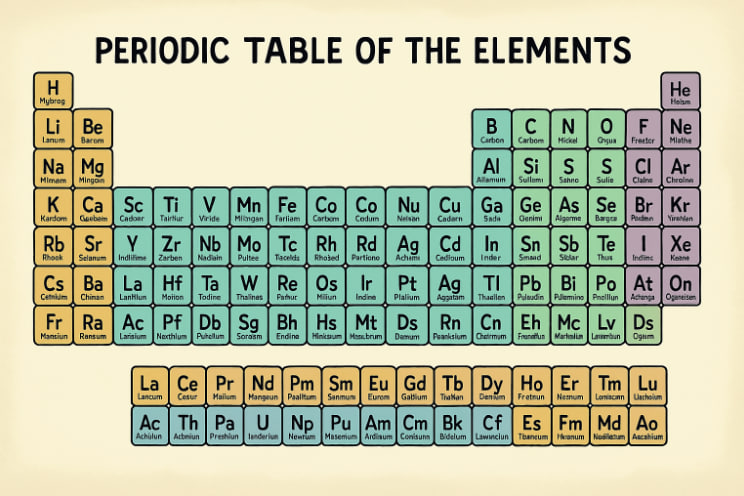The Periodic Table of Elements, often simply called the periodic table, is a fundamental tool in chemistry and science that organizes all known chemical elements based on their atomic structure and recurring chemical properties. Created in its modern form by Russian scientist Dmitri Mendeleev in 1869, the table has become one of the most important references in all of science, helping scientists understand relationships between elements and predict the behavior of unknown substances.
How the Periodic Table Is Structured
The table is organized in rows (called periods) and columns (called groups or families). Each element is placed based on its atomic number — the number of protons in its nucleus.
- Periods (rows) show a progression of increasing atomic number. As you move from left to right, the properties of the elements gradually change.
- Groups (columns) contain elements with similar valence electron configurations, which means they often have similar chemical behavior.
There are several distinct regions:
- Metals, including transition metals (center),
- Nonmetals, including noble gases (right),
- Metalloids, which have properties of both (diagonal strip).
The two bottom rows, known as the lanthanides and actinides, are placed separately for space.
Why the Periodic Table Is So Powerful
The periodic table is much more than a chart — it’s a predictive model. Mendeleev’s version left blank spaces where no element was yet discovered but predicted the properties of those elements with remarkable accuracy. Today, the table helps:
- Predict how elements will react chemically;
- Understand trends in electronegativity, atomic radius, and ionization energy;
- Identify families like halogens, alkali metals, and noble gases;
- Teach basic and advanced concepts in chemistry, physics, biology, and materials science.
Modern Developments and Future Discoveries
Today’s periodic table includes 118 confirmed elements, with the latest additions such as nihonium (Nh), moscovium (Mc), tennessine (Ts), and oganesson (Og) — all named after scientists or regions associated with their discovery.
Scientific efforts continue to create superheavy elements in particle accelerators, and theoretical work is ongoing about the possible existence of an “island of stability” — a set of ultra-heavy elements that could be more stable than expected.
Glossary
- Atomic number: The number of protons in the nucleus of an atom.
- Valence electrons: Electrons in the outermost shell of an atom that determine chemical bonding.
- Transition metals: Elements in the center of the periodic table known for forming colorful compounds.
- Electronegativity: A measure of how strongly an atom attracts electrons.
- Ionization energy: The energy required to remove an electron from an atom.


